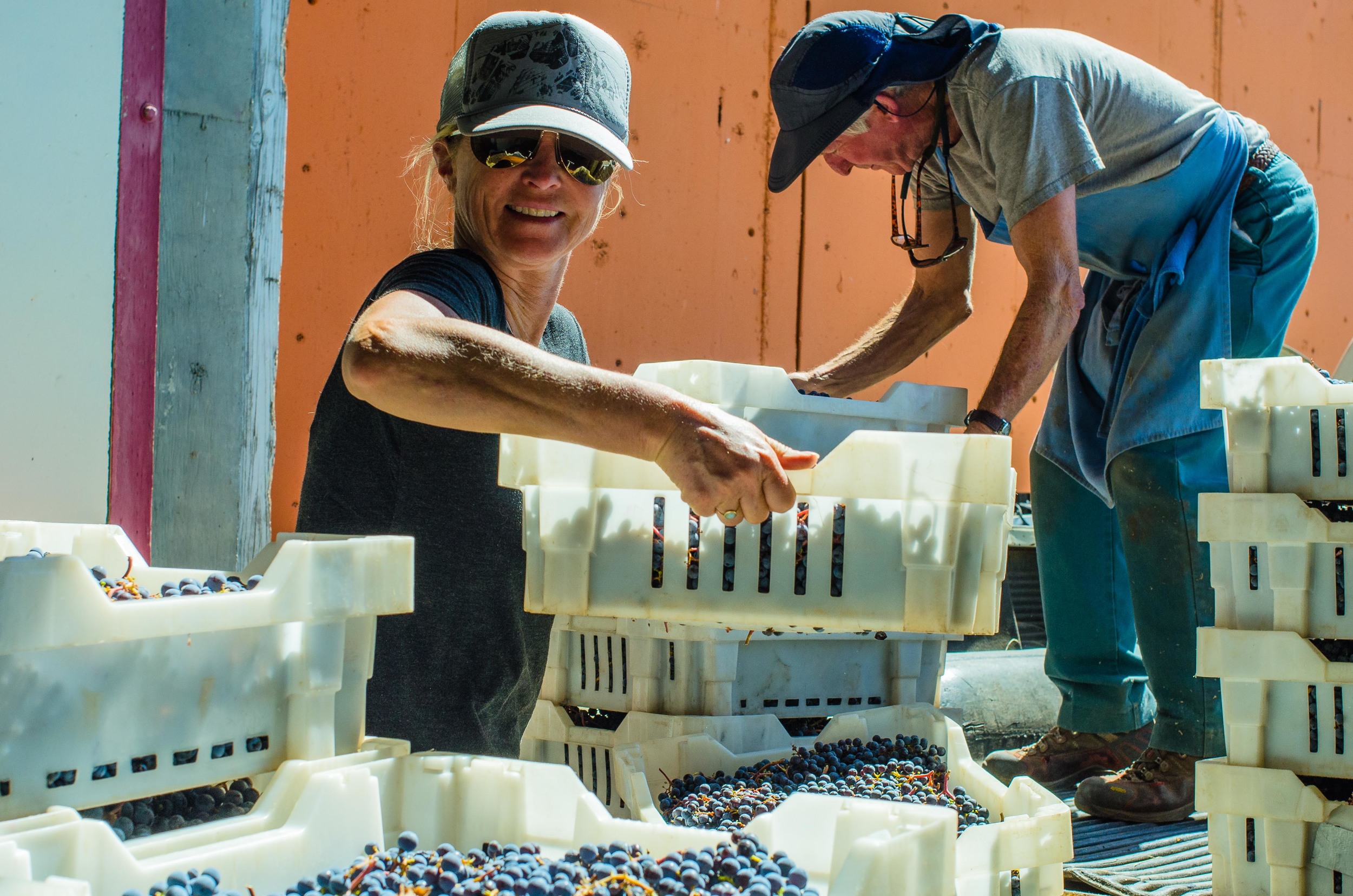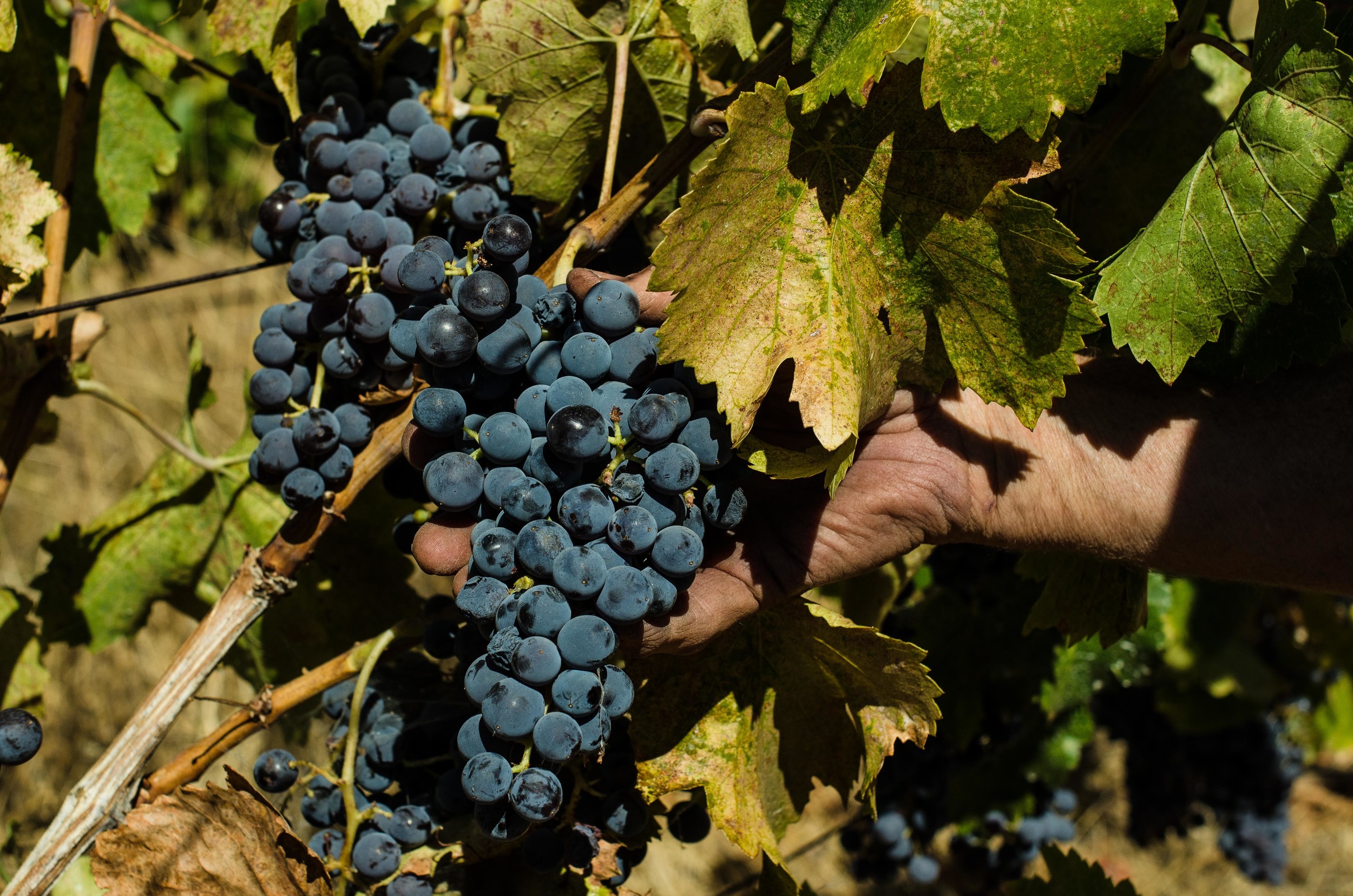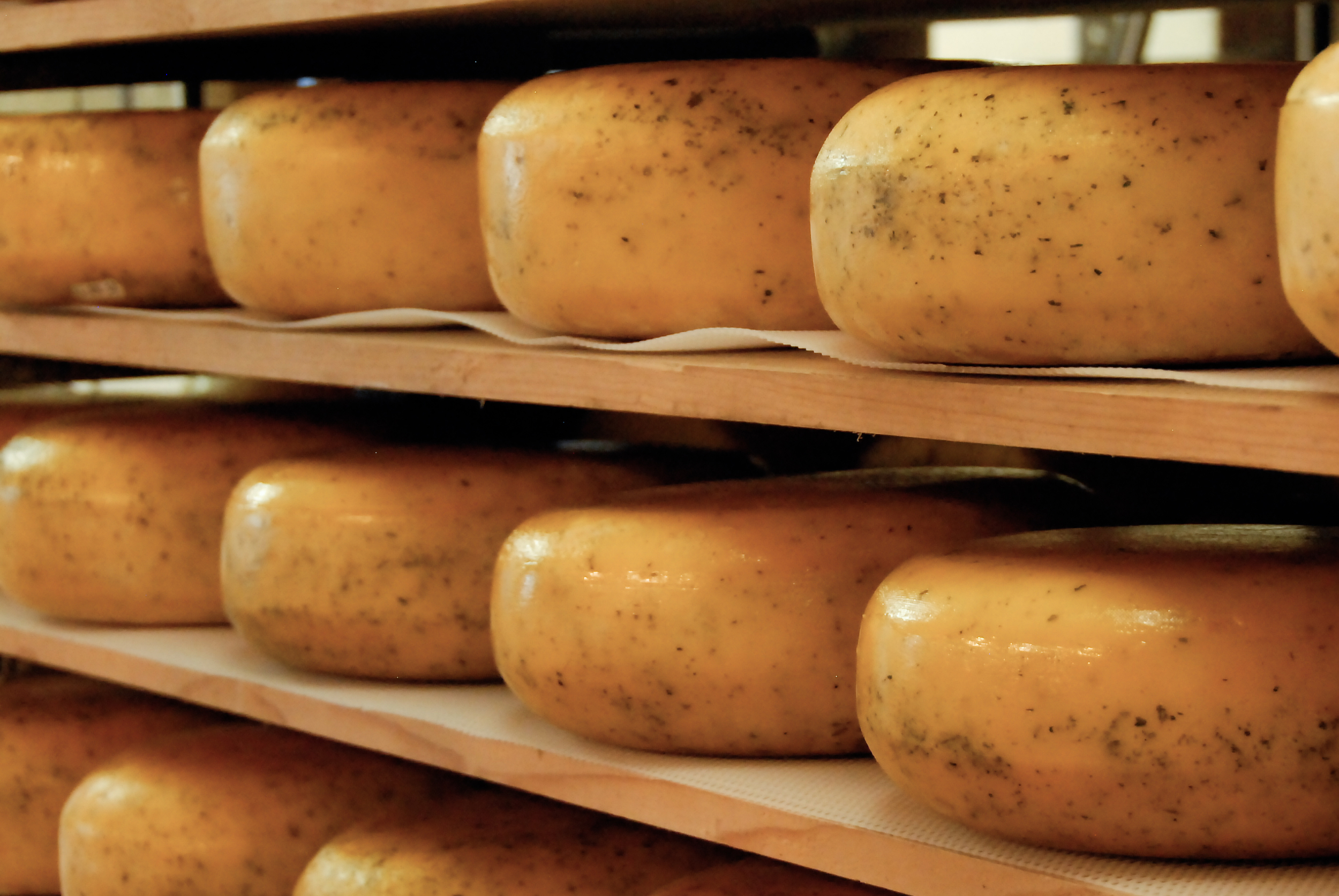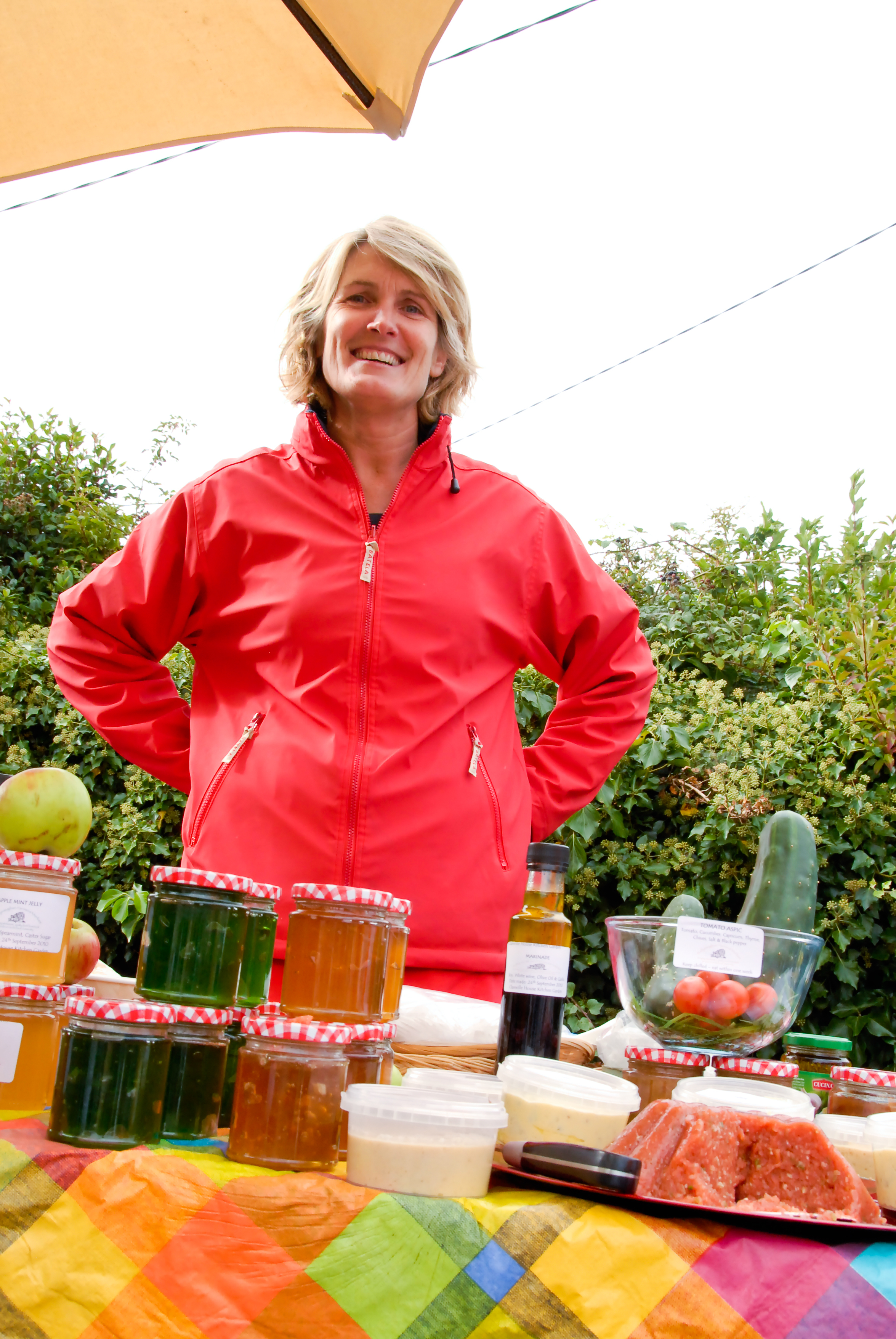Saving the Family Farm
San Francisco Chronicle Magazine
THE NECTARINE'S SKIN wrinkled into folds, releasing the sweet-tangy flesh underneath. Before the juice could dribble, I sucked it into the pockets of my cheeks and savored its goodness. I ate another. Afterward, I telephoned Twin Peaks Orchard, near Newcastle in Placer County, 75 miles away from my home in north Lake Tahoe. “I need a whole case of these nectarines,” I said. I would be driving to San Francisco the next day; owner Sheila Enriquez agreed to meet me at the orchard on my way.
A few years ago, I didn’t know a person could easily buy fruit directly from regional farmers. At the same time, many farmers in Placer County, which extends from just outside of Sacramento to north Lake Tahoe, didn’t know there existed scores of people who would pay more for better tasting fruit fresh off the tree. In the late 1990s, they were in turmoil. Experiencing shrinking profits and expanding development pressure, family farmers were selling out. In five years, one sixth of Placer County’s farmland vanished under new neighborhoods and malls. In 1997, 35 percent of Placer County’s farmers were 65 years or older and ready to retire. Half of all farmers reported having no family members around to take over the farm.
What happened next could be called a lucky intersection of forces — a message, a woman and a moment. Things in Placer County reached a tipping point, to borrow the term from Malcolm Gladwell’s book of that name.
From I-80, the route to Twin Peaks curves along stone-knuckled ridges, riverbeds and hollows that typify this section of the northern Sierra Nevada foothills. In June, fields of grass were already turning gold, their drying stalks releasing a smell of roasted wheat that seeped into my car’s air system. At Twin Peaks Orchard, Enriquez greeted me with a hand that felt warm to the bone. Inside the barn sat my box, its 60 nectarines resting in neat plastic liners, blushing lightly.
I reached for one.
“You don’t need to squeeze them,” Enriquez said, the punchy cadence of her speech mimicking the rhythms of the landscape. “Everyone wants to squeeze them. You can tell they are ripe just by brushing them with your finger.”
I pressed the skin of one. It felt cool and silky. I still wanted to squeeze.
Thirty years ago, Enriquez and her husband, Raul, became partners in the 50-acre farm with her stepfather, Howard Nakae, who had grown nectarines, plums, and peaches on the land since he was 5. Howard died last June at age 87. Fortunately, Sheila and Raul had gleaned many of his secrets.
“He had 15 rules to live by,” Sheila said. “One of them is, ‘Don’t ask someone else to do what you can do yourself.’ I know them in my heart, and I live them.”
Twin Peaks is one of a handful of orchards operated by founding families. The first fruit trees were planted 200 years ago by Welsh immigrants who were quarrying granite. In 1848, a prospector discovered gold, and more immigrants rushed to the foothills. By the 1860s, the gold miners had moved to more lucrative mines in the higher mountains. Settlers who stayed behind learned that berries grew surprisingly well, and soon growers around Penryn, Newcastle and Auburn were sending strawberries, blackberries and raspberries by stage and rail as far away as Virginia City, Nev. In 1901, Newcastle shipped 1,862 railroad cars of local fruit. By the 1930s, fruit trees covered 60 percent of the region.
Some of the first orchard owners were Japanese immigrants. Howard Nakae’s father, Yoshichka Nakae, founded the family orchard in 1912. Yoshichka helped many of his Japanese friends purchase property for farms, according to Enriquez, but his life ended tragically. At the time, racism percolated among his neighbors, and in 1932 an unknown assailant shot and killed him. Howard, then 13, stepped into his father’s shoes and sustained the operation alongside his mother.
While business continued to flourish during the early century, farmers couldn’t have anticipated the economic roller-coaster that lay ahead. Setbacks occurred in World War II when manual labor pools shrank and the federal government forced Japanese American families into internment camps. Neighbors looked after the abandoned orchards, and many of the interned families resumed production when they returned. After the war, the economy surged, and by the 1950s, Placer County farmers enjoyed national acclaim for the pears, plums and peaches they were sending nationwide by rail.
But in the 1960s, a pear blight struck. On its heels came a wave of unbeatable competition from Central Valley farms, which grew large quantities of fruit and shipped crops earlier at lower costs. The small farmers’ usual wholesale customers canceled business. Farmers now had to travel farther to sell to stores for lower prices. Profits thinned.
Between 1995 and 2005, Sacramento’s population exploded by 48 percent. Developers purchased swaths of Placer County’s rural landscape for housing developments, golf courses and shopping malls. Land prices soared from $15,000 an acre in the 1980s to more than $80,000. Long-working farmers suddenly imagined themselves dozing in Caribbean hammocks instead of plucking fruit.
“Land prices continued to skyrocket and development continued unabated,” said University of California Cooperative Extension Farm Adviser Roger Ingram. “In 1999, only about 50 percent of farmers surveyed indicated there was someone in the family willing to continue farming. A big majority of them wanted to retire, or maybe there was disability or death. They were wondering ‘What will we do with this asset?’ It was hard to ignore the huge opportunity costs of selling.”
But many Placer County residents didn’t want blacktop to replace their serene landscapes. In the late 1990s, the county supervisors convened citizen committees to guide what soon became “Placer Legacy,” a program to protect the county’s agricultural assets and open space.
Out of those meetings came wisdom, according to the county’s Agricultural Commissioner, Christine Turner. “The growers told the board of supervisors, “We’re very good at growing what we grow, but we don’t necessarily have the skill set for effective marketing.” The farmers asked the county to hire a full-time agriculture marketing expert. It would be the first county-funded “ag” marketing director in California.
The supervisors allocated $68,000 for the program. Right away, a compelling application arrived from someone familiar to politicians and farmers alike. Auburn resident Joanne Neft had community connections, a creative imagination and chutzpah. She vowed to change the shopping and eating habits of a region.
At age 65, Neft already possessed an arc of experience with both agriculture and business. As a child growing up on a Minnesota farm, she had occasionally accompanied her father to the local market. “It was a treat for me to go to market,” she said recently. “My dad would pick the kohlrabi, leave the stems on, peel off the outer skin, and hand it to me. I would eat it as though it were a Popsicle.”
Neft attended Barnes School of Commerce, a private business school in Denver. Between 1970 and the mid-1980s, she operated and owned several businesses in Tahoe City — Patton Lumber Co. with her first husband; North Shore Travel and The Mayfield House, a Julia Morgan inspired Bed and Breakfast inn. She then moved briefly to Long Beach, but missed living in Northern California. “I decided to return to Placer County and change my lifestyle,” she recalled. The decision was based on vegetables. “The thing I enjoyed most was going to the Santa Barbara farmers’ market — being there among the produce. So I went up to Placer County to start my own farmers’ market.” The county needed a manager for the existing Foothill Farmers Market Association. In 1989, she got the job.
In the beginning there was one market, in the town of Loomis, where up to 39 growers filled stalls every Sunday with strawberries, peaches, corn, beans, lettuce and other fresh stuff. Neft then opened another market in north Lake Tahoe. “I knew the Tahoe market would be successful,” Neft said. “People were craving the freshness of the earth and it wasn’t available there.” She was right. In 1990, 67 growers served 3,000 shoppers per week in the Auburn, Loomis and Tahoe City markets combined. Some farmers reported earning $4,000 in a single day. Within three years, Neft was managing six weekly markets.
Her next job was with the Twelve Bridges development corporation, where she launched an education foundation and encouraged the corporation to donate 179 acres for a mandarin orchard available for public classroom use.
By 2001, Neft’s web of connections included movers and shakers who trusted her instincts.
“You cannot pay anybody to have passion,” Christine Turner said. “Hiring Joanne as the agricultural marketing director allowed us to hire someone who has the skills and passion to make it happen, and to pay her for that so she can spend her time working on it.”
To create new markets, Neft spread the news that food bought from local farmers tastes better and contains more nutrients than imported produce found at supermarkets. Her strategy was simple: get shoppers to meet the farmers and taste the fruit, tell true stories about the benefits of locally grown produce and create opportunities for the product to sell itself.
“If we are totally honest when we tell our stories,” she reflected, “people know the difference. Way deep down, people know the difference between fluffy marketing and credible marketing.”
Are Placer County fruits eaten fresh from the orchard better than store-bought? To bolster her message, Neft turned to specialists like horticulturalist Cindy Fake. As the University of California Cooperative Extension Small Farm Adviser, Fake spends most days in the field providing research-based information to Placer and Nevada County farmers.
There are two major factors influencing the qualities of mountain-grown fruit, Fake said. Climate is one of them. “Placer County often has a difference of 40 or 50 degrees between daytime highs and nighttime lows,” she said. “Sugars accumulated during the day when the plant is photosynthesizing, are not used up during the night, because plant processes slow down when temperatures drop. Sugars and flavor components then accumulate in the fruit, making a rich, sweet flavor that is unparalleled in fruit grown in a more moderated climate.”
Dirt is another. Much of the soil that once covered the Sierra foothills has been washed into the Central Valley by rains and other forms of erosion. “The shallow foothill soils have low native fertility,” Fake explained. “Growers amend them with lots of organic matter, which maintains fertility and holds moisture. While the plants’ needs are met in terms of water and nutrients, the plants are not overfed, as they are at many large orchards.”
Finally, the small-farm fruit isn’t picked early, as fruit often is at large commercial farms. Instead, growers allow it to ripen on the tree. “Most of it is sold within 50 miles or so,” Fake said. “If it is shipped, it is carefully packed so that it maintains quality.”
The new marketing program included media, grower, and consumer outreach and education, event-development and promotion, and collaboration. Neft wanted to increase demand and create new opportunities for people to buy produce directly from the farmer.
“Direct marketing increases profitability,” Agriculture Commissioner Christine Turner noted. “It eliminates the middle man, and the farmers get a better price per pound for what they are producing. The consumers get fresher fruits and vegetables, and they know the person who grew them. It also keeps dollars within the local economy.”
Neft enhanced existing tourist events, and created new ones. With additional marketing, she turned an event she had launched 12 years ago, the Mountain Mandarin Festival (Nov. 18 and 19, this year), into a blockbuster. Last year it gathered 35,000 citrus lovers together around the zesty “zipper” fruit, so-called for its easy-to-peel qualities. The festival is all things mandarin — shakes, trees, syrups, salad dressings and more. “We sell in the thousands of dollars,” said Rich Ferreira, who tends 2,000 mandarin trees on his 30-year-old farm, Side Hill Citrus.
A recent new event is the annual Placer Farm & Barn Tour, this year on Oct. 8. Last year it drew 2,500 people who roamed among the oak-wooded foothills to visit working farms and ranches, a historic schoolhouse, wineries and produce markets.
Between big events, Neft hand-carried produce to small events. Anyone biting into a local fruit or vegetable — the kiwis, the lettuce, the pluots, the peaches — could become a convert. “Many times I attended the events myself,” Neft said. “I’d tell people, ‘These are Placer grown peaches just picked this morning. Taste them; they’re delicious.'”
She also served the food. “In three years at the Gold Country fair, we served probably more than 1,000 people,” she said. And she motivated a diverse cast of helpers — from lawyers to bureaucrats, pharmacists to artists … “anybody willing to come along for the ride,” she explained. “One year it was the agriculture commissioner, another, the USDA adviser. Many different people got together and peeled, sliced and diced.” She was not only spreading the news, but also building a community.
Neft worked with University of California students and professors to generate new promotional strategies. The U.C. Sustainable Agriculture and Research Program (SAREP) is a state-wide program based at U.C. Davis that produces research and education for agriculture and food systems. Recently, SAREP researchers have generated reports on Placer County food trends, as well as marketing possibilities for mandarins and Hoshigaki, the ancient Japanese art of hand-dried persimmons.
Fine art figured early in the plan. One year Neft commissioned local artist Everett Jensen to paint 26 portraits of leaders in the city of Auburn for the exhibit, “Auburn 2005: Portraits of a Place.” Each painting featured the fruit in season the day the portrait was painted. Another year, partnering with the UC Davis School of Design, she launched Agro-Art, a festival of visual arts created with fresh produce. That event is now part of the Farm & Barn Tour. She also encouraged artisans to erect booths on farms during the Farm & Barn tour. Now some farms have official “artists in residence” programs.
Finally, the marketing program helped farmers to build markets for “boutique” produce, and price them accordingly. Neft realized that hoshigaki — persimmons that are hand-massaged regularly for a month until the natural sugars rise to the surface — would be a good model.
She tells of how farmer Tosh Kuratomi of Otow Orchards one day charged her $24 for three pounds of hoshigaki. She asked, “How could you possibly do all this hand labor and not be rewarded for your time?” Kuratomi answered, “That’s just not the way it is, Joanne.” In order to spur demand, Neft generated articles in the Sacramento Bee, Sierra Heritage magazine, and the L.A. Times. “My intuition told me, if I’m willing to pay $10 pound for it, someone else would pay it if they understood the kind of effort that went into this product. Every piece is touched probably 10 times. Why would that not have a value?”
When dried, a piece of hoshigaki resembles a palm-sized monk in brown robes powdered with sugar. It tastes something like a fig, only sweeter. “The short story is, last year they were getting $25 per pound,” Neft said.
Neft recognized hidden opportunities. She believed that farmers and their customers could know one another even better if the growers offered overnight farm stays. “People want a connection with farms,” she reasoned. “They want to know something about the person who feeds them.”
Compelling stories came easily to her, quite often in her own kitchen while she was baking pies. Christine Turner recalls the year one grower related that all the apple varieties were ripening at once instead of on their usual staggered schedule. “We had so many apples we didn’t know what to do with them all,” she recalled. “Joanne called the newspapers and said, ‘We have an opportunity here, and the story will have good photos.’ The article about fresh-picked apples in season available at local farms hit the Auburn Journal front page. That weekend the apple growers sold out.”
Years ago, Neft recognized the story opportunities presented by the Satsuma mandarin.
“Satsuma mandarins are seedless, juicy, easy to peel, and healthy,” she said. “They are one of the super foods. They are very high in vitamin C. The white fibrous material in them is high in synephrine. Mandarins are in season at the perfect time of year when we need to have that kind of food in our system.”
Her attention to the crop created a new chapter in the mandarin story. With better marketing, the annual Mandarin Festival attracted visitors from all over California. A Mountain Mandarin Tour of orchards drew 20,000 people last year. A UC Davis study reported that while average annual U.S. Mandarin consumption hovers at about 1 pound per person, in Placer County, it is now 3.5 pounds per person, up from 1 pound in 2001.
“A seed I’d like to plant is that mandarins are the perfect holiday gift,” Neft said. “Last year I shipped over 700 pounds of mandarins. It is the perfect gift because it is a gift of health. Who would not want to receive a box of mandarins?”
A key success has been the Foothill Farmers’ Market. Since 2002, manager Christina Abuelo has orchestrated a growth surge in the markets serving Placer and Nevada counties. In 2002, 83 growers contributed to seven weekly markets. This year, more than 200 growers supplied 16 markets, Abuelo said.
“Because of the economy, a lot of people are getting laid off from other work,” Abuelo said. “The farmers’ market is now their new livelihood.”
Shoppers arrive early at the farmers’ markets carrying canvas bags they’ll fill to bursting with blackberries, strawberries, blueberries, persimmons, plums, raspberries, rhubarb, nectarines, peaches, plums, figs, kiwis, melons, corn, lettuce, broccoli, eggplant, squash, tomatoes, zucchini, flowers, nuts and much more. When asked why they shop at the open-air market stalls available only one day a week, when they can shop anytime at a supermarket, customers say the farmers’ markets help them to eat better.
“This is the way the rest of the world shops for food,” said north Lake Tahoe resident Julie Conover, who travels extensively to produce the PBS adventure travel series “Passport to Adventure.” “A few years ago, I decided less is more. Rather than going to Costco, I come here. Instead of treating myself to chocolate cake, I treat myself to blueberries.”
Has the marketing program changed farmers’ lives? “Farmers will not tell you how much they are making,” Neft said, “but they will say ‘Business is alive now; the business of agriculture has been redeemed.'” Buried in a 2006 Placer County economic and demographic profile is support for that statement. Employment in the county’s agriculture sector nearly doubled between 2001 and 2004, from 400 to 700, reflecting growth in the numbers of grapes and mandarin crops planted, according to farm adviser Roger Ingram.
“Farmers are more aware of what marketing requires and of its importance,” added Fake. “They are more willing to think about different types of marketing, and to try something new.I think growers are prouder of what they do because they know others value them and realize the freshness and quality of their products.”
And, growers and their customers have new relationships. “Every mandarin grower has their customers who say ‘We love your fruit, we like you and we want to buy from you,'” said Highland Orchard owner Tony Aguilar. “They always do come back.”
And farmers are acting to preserve their land forever. “My property will be put into a trust so it can’t be developed,” said Rich Ferreira. But he admits his daughters aren’t eager to run the business. “I hope I’ll be able to continue long enough to where they’ve picked a career and married, and their husbands will want to take over.”
As for the Nakae family, after Howard died, there was talk of selling the farm, but that soon ended. “It will be a family operation,” Sheila Enriquez said. “My stepsister will help, and some of the younger people will be able to work here.”
Deborah Madison, a Davis native who was the founding chef at Green’s Fort Mason restaurant, reasoned you can’t always fit these benefits into traditional economic models. “A more subtle texture can be found in these smaller communities, which has to do with biodiversity, nuance and tradition, rather than just production,” she said recently in an interview from her New Mexico home. “It may be that not many people ever taste that persimmon, but there will be those who do, and it will become a tradition for them to continue eating them. You went to a farm; you had an experience that mattered, something that connected you to a place, a person and ultimately the history of the land. Small farms are vital to the health of any community.”
During Neft’s tenure as Placer County’s agriculture marketing director — she retired this year — she used connections, stories and personal dynamism to fuel a movement. While farmers will always struggle to gain markets and manage setbacks, in Placer County, they now have a community behind them.
“We don’t have to create quality of life,” Neft said. “We can preserve quality of life by understanding who we are and how we are connected to the place where we live. And by caring for it, for goodness sake. It’s so easy to identify that and make it happen.”
All Photos are Copyright Laura Read






